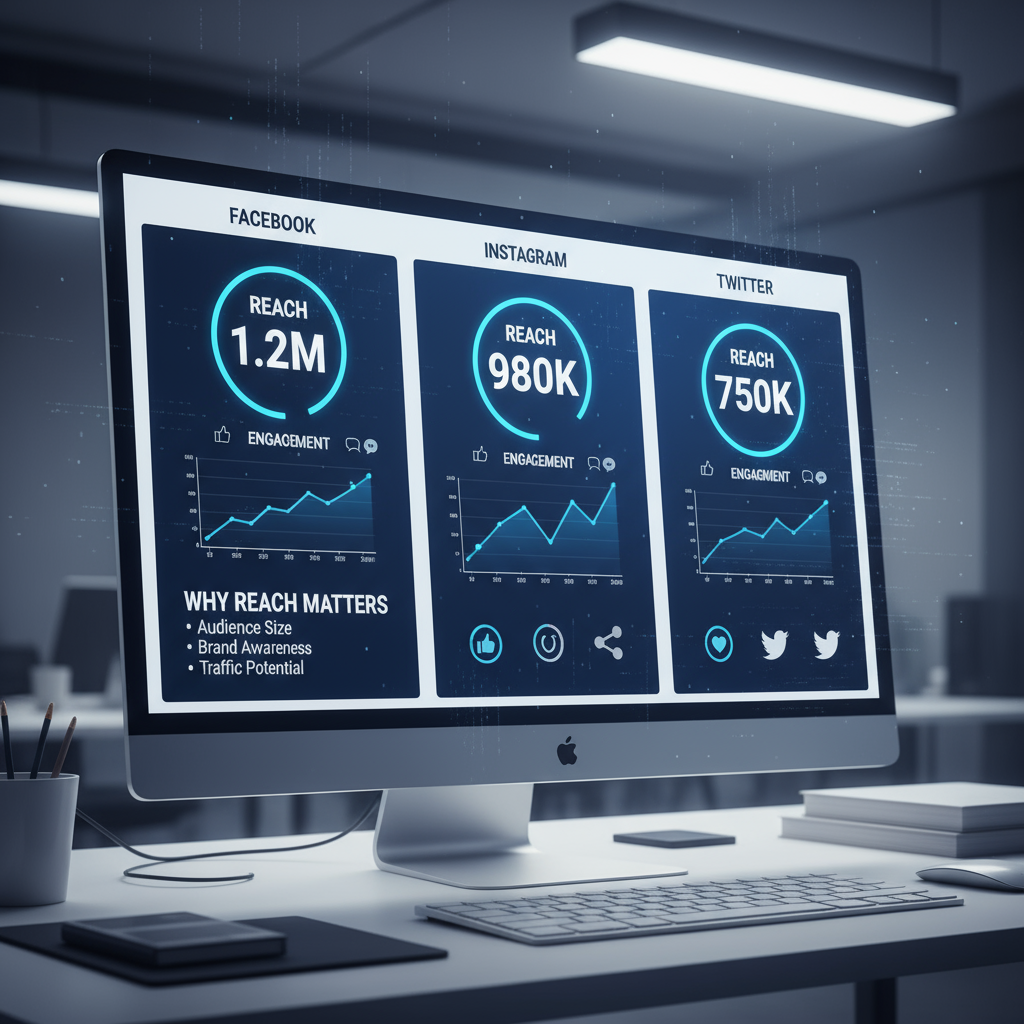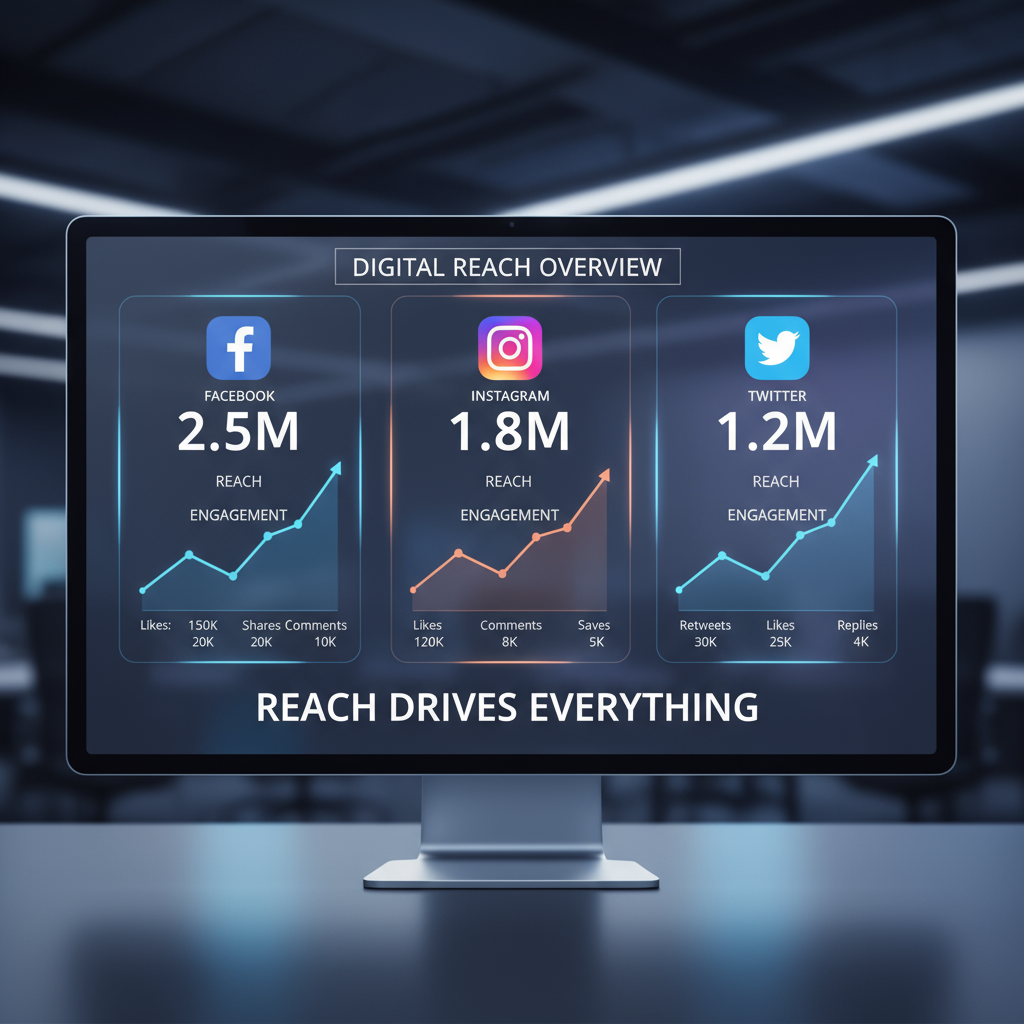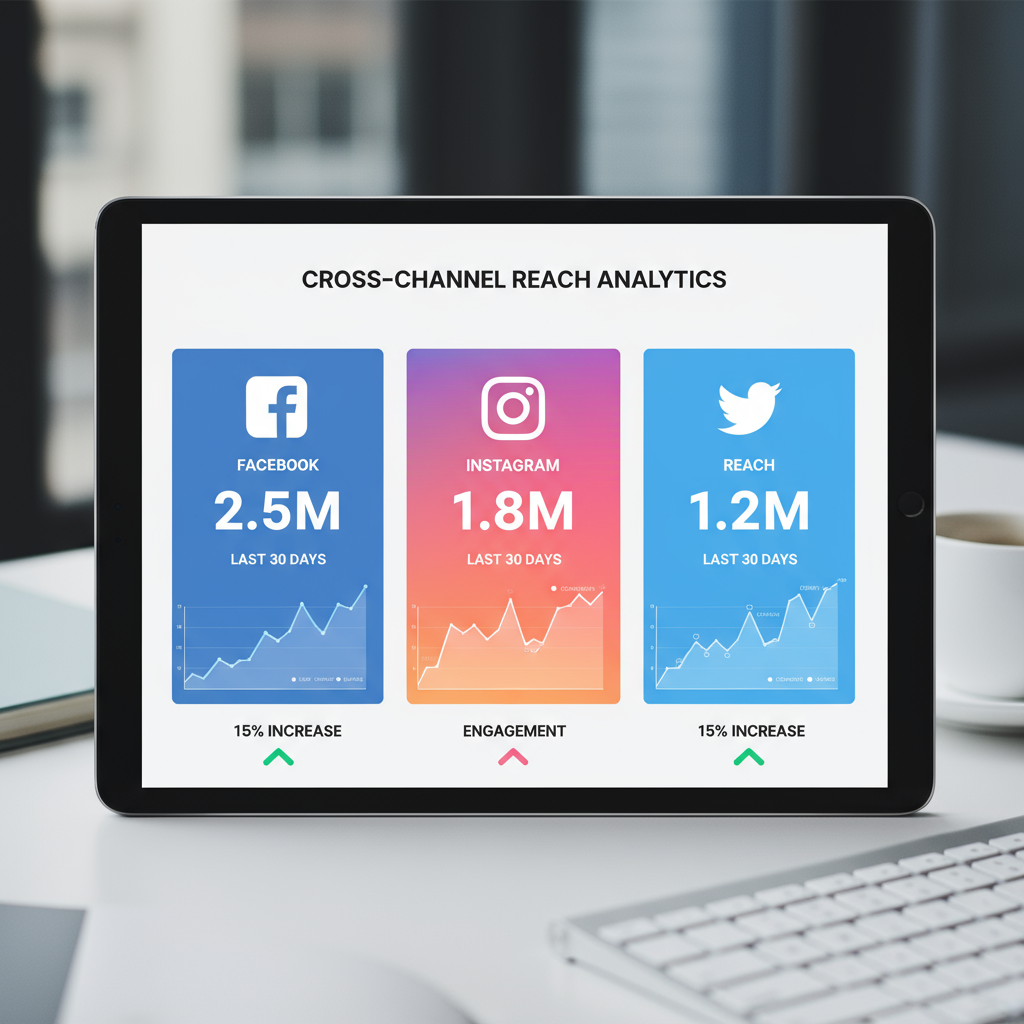Best Definition of Social Media Reach and How It Works
Learn what social media reach means, how it differs from impressions and engagement, factors affecting it, and strategies to grow reach organically and paid.

Best Definition of Social Media Reach and How It Works
Social media reach is a fundamental metric in digital marketing that determines how extensively your content is seen by unique users. Whether you're evaluating organic performance or paid campaigns, understanding reach is key to amplifying brand visibility and measuring success effectively. This guide explains what social media reach is, how it differs from impressions and engagement, the factors that influence it, and actionable ways to increase your reach across major platforms.

---
What Is Social Media Reach?
In the simplest terms, social media reach refers to the total number of unique users who have seen your content. It measures how far your message has traveled from your profile into the feeds of real people.
Key takeaway: Reach counts people, not views — that’s the big difference from impressions.
For example, if your Instagram post appeared to 1,000 different accounts, your reach is 1,000, regardless of how many times each account viewed it.
---
Reach vs. Impressions vs. Engagement
Many marketers mix these metrics up, so let’s clarify:
| Metric | Definition | What It Tells You |
|---|---|---|
| Reach | Number of unique users who saw your post | Audience size & distribution |
| Impressions | Total views (including multiple views by same user) | Content visibility & frequency |
| Engagement | Actions taken (likes, shares, comments, clicks) | Audience interaction quality |
Think of it this way: Reach = How many people know your message exists. Impressions = How many times your message was displayed. Engagement = How people respond.
---
Why Reach Is a Key Metric in Social Media Marketing
Reach is critical because it represents your potential audience size. High reach means your content has broken beyond just your followers — it’s appearing in the feeds of new audiences, which can:
- Increase brand awareness
- Drive new followers organically
- Create touchpoints for conversions
- Improve ROI when combined with strong engagement
Without reach, even the most engaging content stays hidden in a bubble.
---
How Reach Is Calculated on Major Platforms
- Measures the number of individual accounts that have seen your post at least once.
- Reach can be organic (unpaid) or paid (via ads).
- Shows the number of unique accounts that have seen your Story, Reel, or post.
- Often segmented by followers vs. non-followers.
Twitter (X)
- Historically used impressions rather than reach, but analytics tools can estimate reach using follower counts and engagement rates.
- Shows “unique views” on posts, articles, or ads.
- Often emphasizes reach in professional contexts.

---
Factors Influencing Organic Reach
Organic reach is shaped by various factors:
- Content Quality – Posts that resonate get shared more, expanding your reach.
- Posting Time – Publishing when your audience is most active boosts visibility.
- Audience Size – Larger followings mean greater baseline reach potential.
- Engagement Signals – Likes, shares, comments can push posts into more feeds.
- Platform Algorithms – AI-driven feeds prioritize content expected to generate engagement.
---
Paid Reach and Its Role in Advertising Campaigns
Paid reach is the number of unique users who see your content via paid promotion. It lets you:
- Target specific demographics and interests
- Guarantee visibility beyond organic limits
- Test new audiences quickly
- Support product launches or events
Paid campaigns can supplement organic efforts or act as standalone reach boosters.
---
Examples: High vs Low Reach Posts
High Reach Example:
A TikTok creator posts a trending dance video with a unique twist during peak usage hours. The video gets shared widely, appearing in feeds beyond their followers.
Low Reach Example:
A company posts a promotional image at 3 AM with no hashtags and minimal creative appeal. The algorithm shows it to few followers, and without engagement, it quickly disappears.
Why the difference?
- Timeliness + relevance = algorithmic boost.
- Lack of optimization = limited distribution.
---
How Algorithms Influence Reach
Social media algorithms decide who sees what based on predicted interest. Common algorithm priorities include:
- Strong initial engagement within minutes of posting
- Content format preference (e.g., video over images)
- Topical relevance based on recent trends
- Recency (fresh content is favored)

If your content matches these priorities, it is more likely to be shown to a wider audience, thereby increasing reach.
---
Strategies to Improve Organic Reach
Here are proven tactics to expand reach without spending on ads:
- Use Relevant Hashtags: Increase discoverability in search and explore tabs.
- Post Shareable Content: Memes, infographics, and quick tips get reshared more.
- Cross-Platform Posting: Repurpose content across Instagram, LinkedIn, Facebook, TikTok, and YouTube Shorts.
- Engage With Your Audience: Reply to comments to signal activity.
- Leverage Collaborations: Partner with influencers for mutual exposure.
---
Tools & Analytics for Accurate Reach Measurement
Most social platforms provide native analytics dashboards. For deeper insights, brands often turn to third-party tools:
- Hootsuite – Aggregates reach data across channels.
- Sprout Social – Adds competitive benchmarking.
- Google Analytics – Connects social traffic to on-site metrics.
- Buffer Analyze – Streamlined for smaller teams.
These tools help identify which content drives the highest reach growth and allow you to adjust your strategy accordingly.
---
Why Tracking Reach Alongside Other Metrics Matters
Reach alone doesn’t guarantee business impact. You might reach 100,000 people with a meme, but if your goal is conversions, you must measure engagement and click-throughs too.
Tracking reach in tandem with other metrics provides the full picture:
- Reach for visibility
- Engagement for resonance
- Conversions for ROI
---
Actionable Tips to Maximize Reach Over Time
- Audit Your Best Performers: Learn what drives past high reach and replicate the winning elements.
- Experiment With Formats: Try Reels, Carousels, Shorts, and interactive Stories.
- Capitalize on Trends Quickly: Early adoption can yield exponential reach.
- Balance Organic and Paid: Use ads to seed content, then let organic engagement take it further.
- Post Consistently: Algorithms reward accounts with regular content schedules.
---
Conclusion
In answering “Which of the following best describes social media reach?”, remember: It’s the count of unique users who’ve seen your content. By understanding how reach differs from impressions and engagement, monitoring platform-specific data, and applying strategic tactics, you can steadily increase your content’s visibility.
Focus on both organic strategies and paid opportunities, leverage analytics tools, and keep adapting to algorithm changes. Over time, a well-optimized reach strategy can expand audience size and elevate brand impact in today's competitive social media landscape.
Ready to grow your reach? Start implementing these strategies today to see measurable growth and stronger engagement across every platform.




